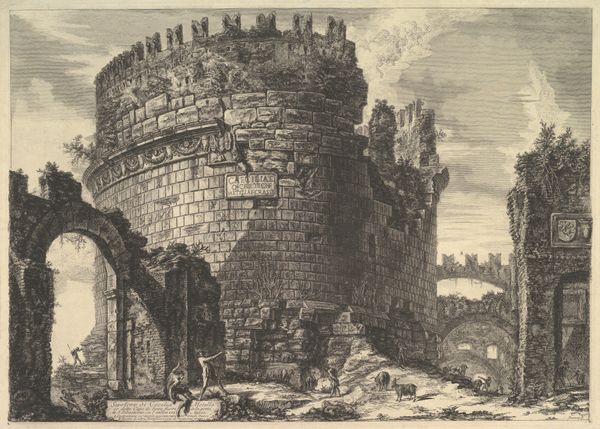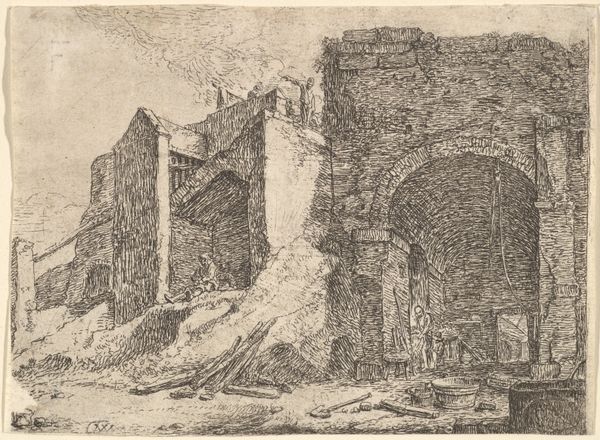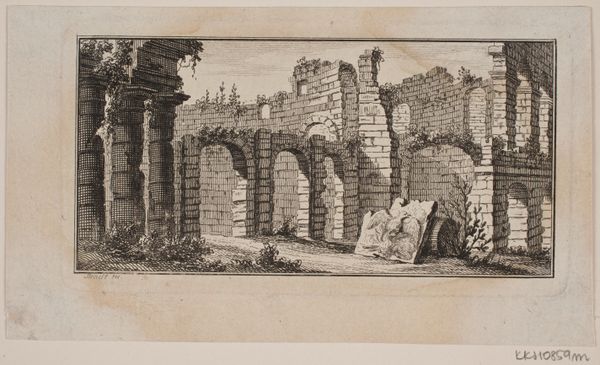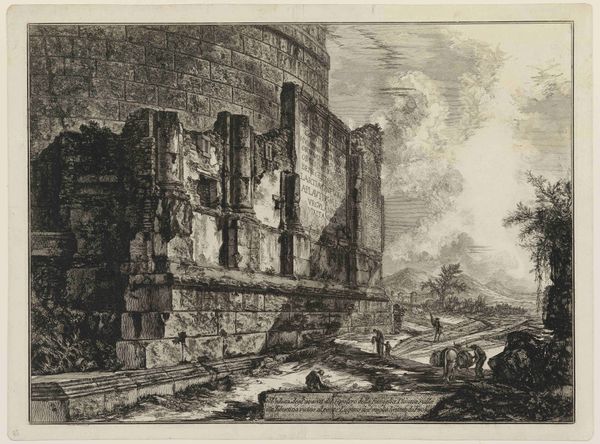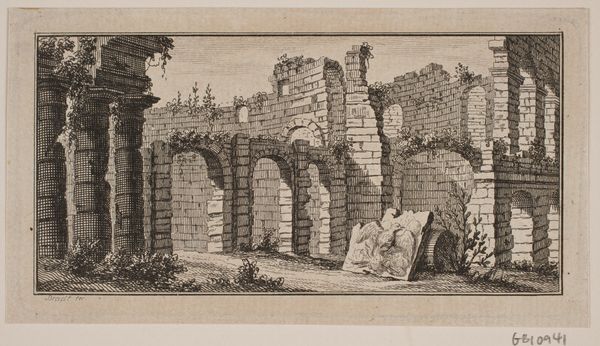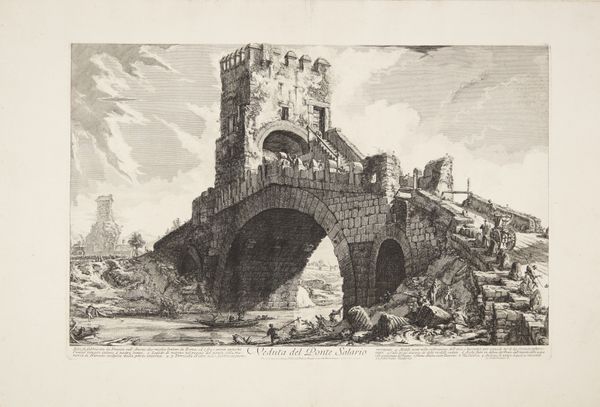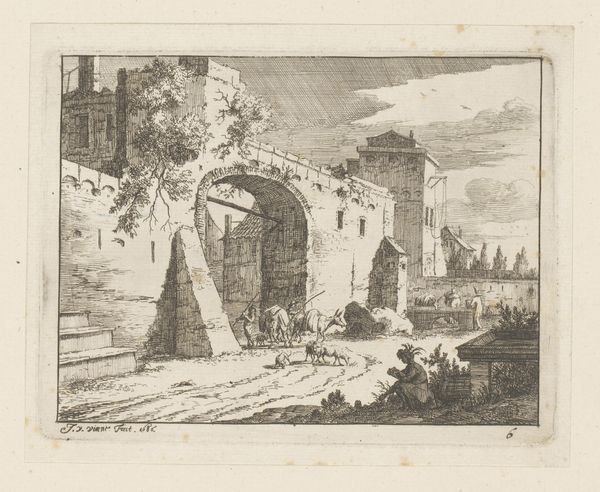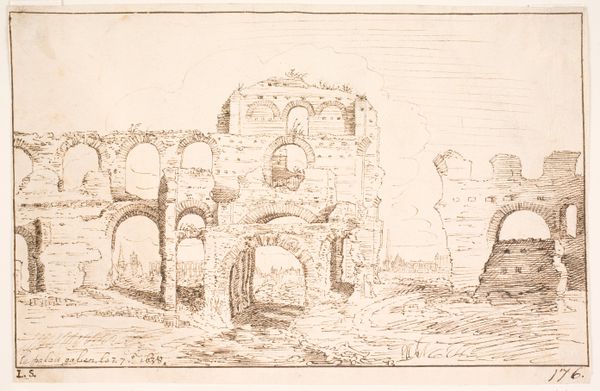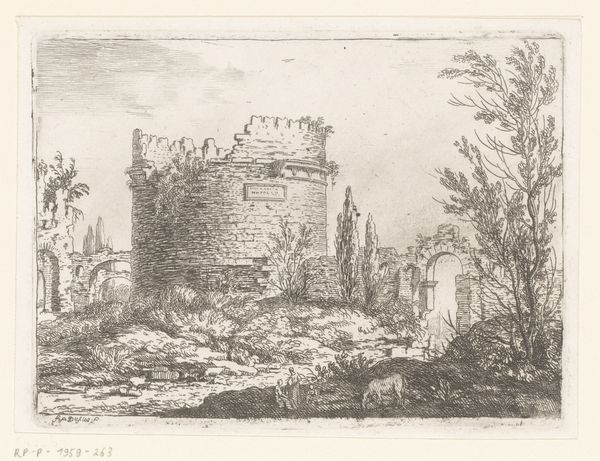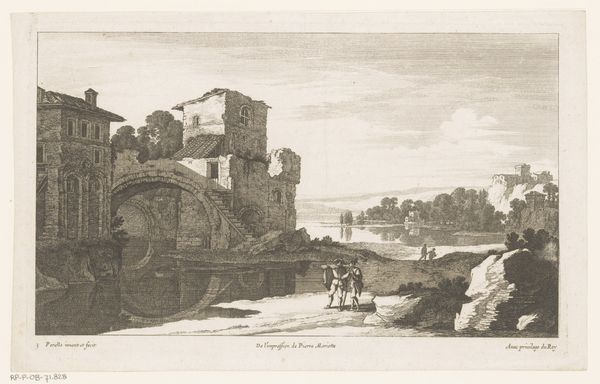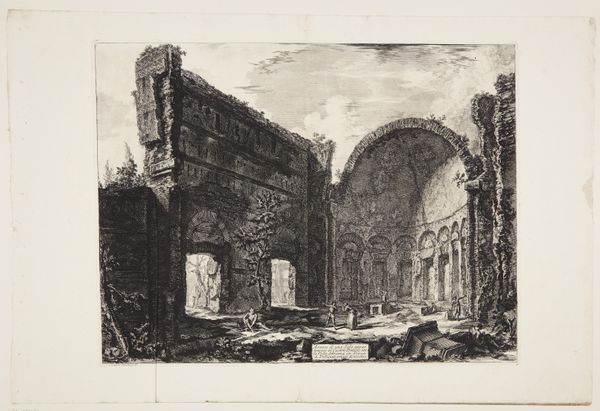
print, etching, engraving, architecture
#
neoclacissism
# print
#
etching
#
landscape
#
ancient-mediterranean
#
engraving
#
architecture
Dimensions: 18 1/16 x 25 1/8 in. (45.88 x 63.82 cm) (plate)19 11/16 x 27 1/16 in. (50.01 x 68.74 cm) (sheet)
Copyright: Public Domain
Editor: So, this is Giovanni Battista Piranesi's "Tomb of Cecilia Metella," created in 1762. It's a print, using etching and engraving. It's quite striking; the sheer scale of the tomb is impressive, even in ruins. What historical layers are you seeing here? Curator: Piranesi's etching speaks volumes about 18th-century European fascination with the ancient world. We're not just looking at a tomb; we're witnessing the visual construction of "antiquity" for a contemporary audience. He sells these as tourist souvenirs. How do you think he presents it in terms of social impact? Editor: Tourist souvenirs? I guess that recontextualizes the work. It isn’t simply a neutral record, but an object embedded in travel and commerce. I also see Piranesi is selling an experience. By highlighting the Tomb's decay, he makes the viewer reflect on its former glory, but also time's passage and the decline of empires. Curator: Exactly. Consider the "Grand Tour"—wealthy Europeans traveling through Italy. Piranesi fed into their desire for tangible connections to the classical past. Think about it – he chose to depict not the pristine monument, but the weathered, overgrown ruins. The tiny figures emphasize scale but also evoke nostalgia, doesn't it? How is it functioning in the popular imagination? Editor: The way he emphasizes the ruins shows both an appreciation for history and an assertion of modernity. Perhaps these tourists saw themselves as inheritors of Roman greatness but safely distant from its decline? Curator: Precisely. And this print, as a mass-produced item, democratized access to that experience. It brings into question ideas of ownership of historical legacy. By framing it through neoclassicism and as a kind of landscape, what kind of value judgement is at work? Editor: That’s a very valid point. So, the print wasn't just about aesthetic appreciation. It actively shaped how people understood and consumed history, linking ancient Rome to contemporary socio-political identities. Thanks! This was very thought-provoking. Curator: Indeed. It really highlights how art can influence the creation and understanding of collective history.
Comments
minneapolisinstituteofart almost 2 years ago
⋮
This round ruin went from tomb to tollbooth. It still stands atop a hill along the Appian Way, about three miles south of the Colosseum. Originally over 70 feet tall and 96 feet wide, it had concrete walls 24 feet thick. As Piranesi noted on the tablet, it was built in the 1st century BCE to honor Caecilia Metella, “daughter of Roman consul Quintus Creticus and wife of Marcus Licinius Crassus.” The swallowtail-shaped battlements on top of the structure were added in the 1300s, when the tomb was converted into a fortress. The owners then used it to collect exorbitant tolls from travelers passing by on the Appian Way.
Join the conversation
Join millions of artists and users on Artera today and experience the ultimate creative platform.
